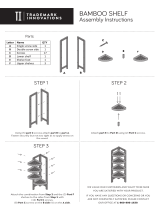A Service Partnership.
Inside you will find many
helpful hints on how to use and
maintain your refrigerator
properly. Just a little preventive
care on your part can save you a
great deal of time and money
over the life of your refrigerator.
Read this Manual
We stand behind our products with
unmatched quality service. However, did
you know that most questions result from
simple problems that you can easily
fix yourself in just a few minutes? This
Owner’s Manual can tell you how.
You’ll find many answers to
common problems here.
If you review our chart of
Troubleshooting Tips first,
you may not need to call for
service at all.
Review the Section on
Troubleshooting Tips
If you do need service, you can
relax knowing help is only a
phone call away. A list of toll-free
customer service numbers is
included in the back section.
Or you can always call the
GE Answer Center
® at
800.626.2000, 24 hours a day,
7 days a week.
If You Need Service
Safety Information
Safety Precautions . . . . . . . . . .4
Proper Disposal . . . . . . . . . . . . .5
How to Connect Electricity . . . .6
Use of Adapter Plugs . . . . . .6, 7
Use of Extension Cords . . . . . .7
Operating Instructions
Temperature Control Dial . . . . .8
Shelves . . . . . . . . . . . . . . . .9, 10
Storage Drawers . . . . . . . .11, 12
Automatic Icemaker . . . . . . . .13
Care and Cleaning . . . . . .14–16
Installation Instructions
Preparing to
Install the Refrigerator . . .17, 18
Water Line Installation . . .19–23
Reversing the
Door Swing . . . . . . . . . . . .24–29
Troubleshooting Tips
Normal Operating Sounds . . .30
Before You
Call For Service . . . . . . . . .31–33
Customer Service
Product Registration . . . . . . . .37
Warranty . . . . . . . . . . . . . . . . .39
Service Telephone
Numbers . . . . . . . . . .Back Cover
3
Troubleshooting TipsInstallation Instructions Customer ServiceOperating InstructionsSafety Information




















